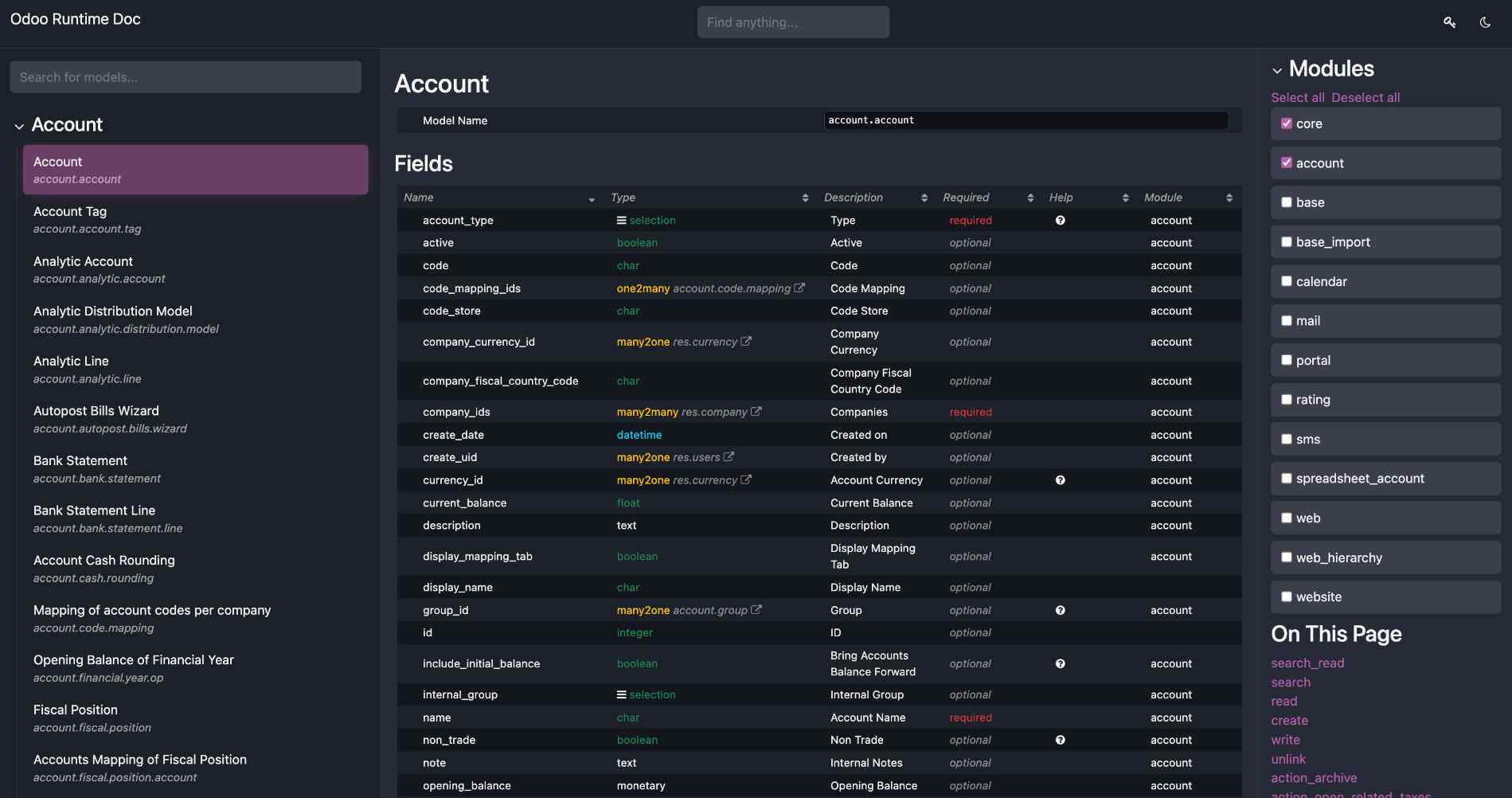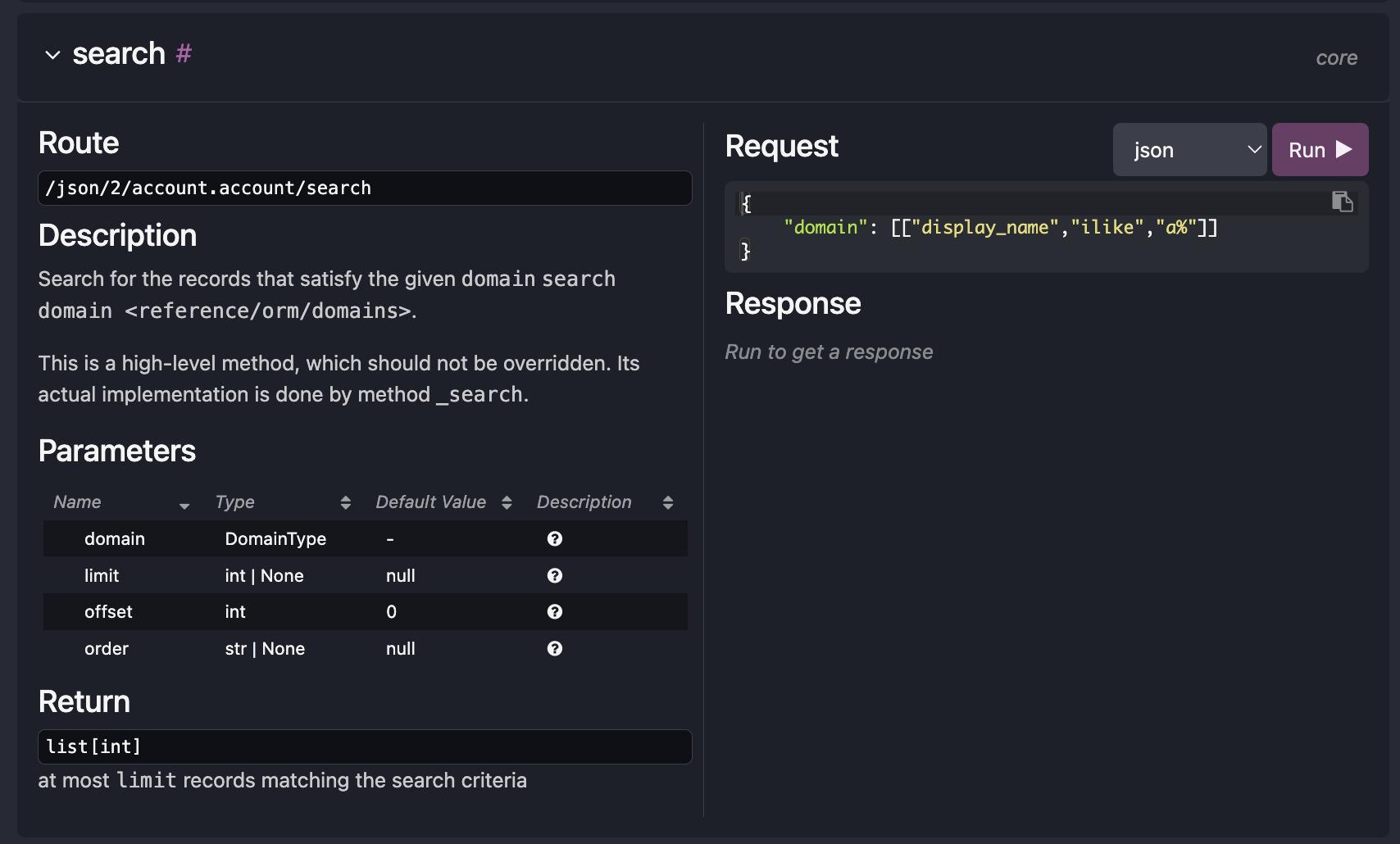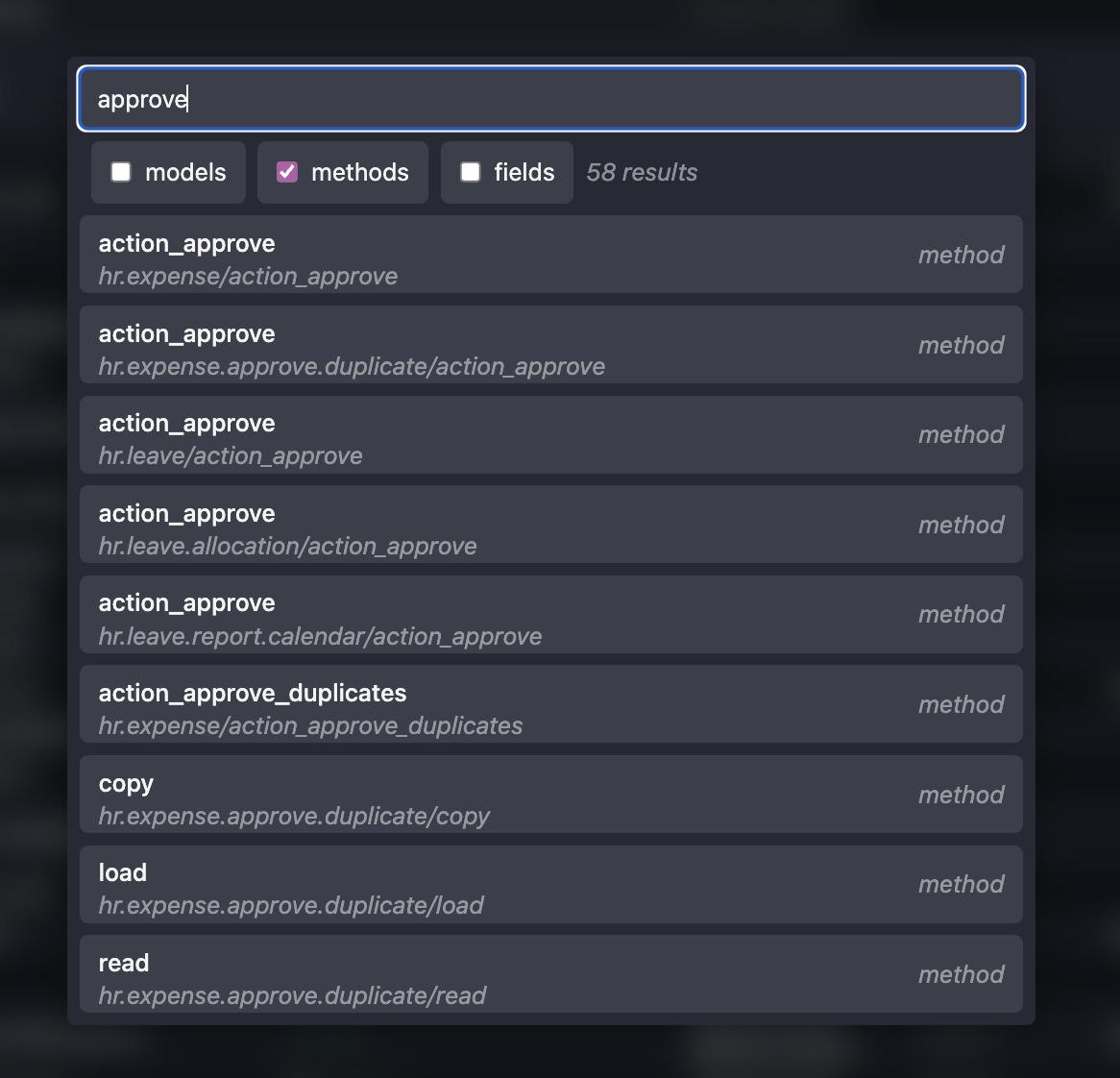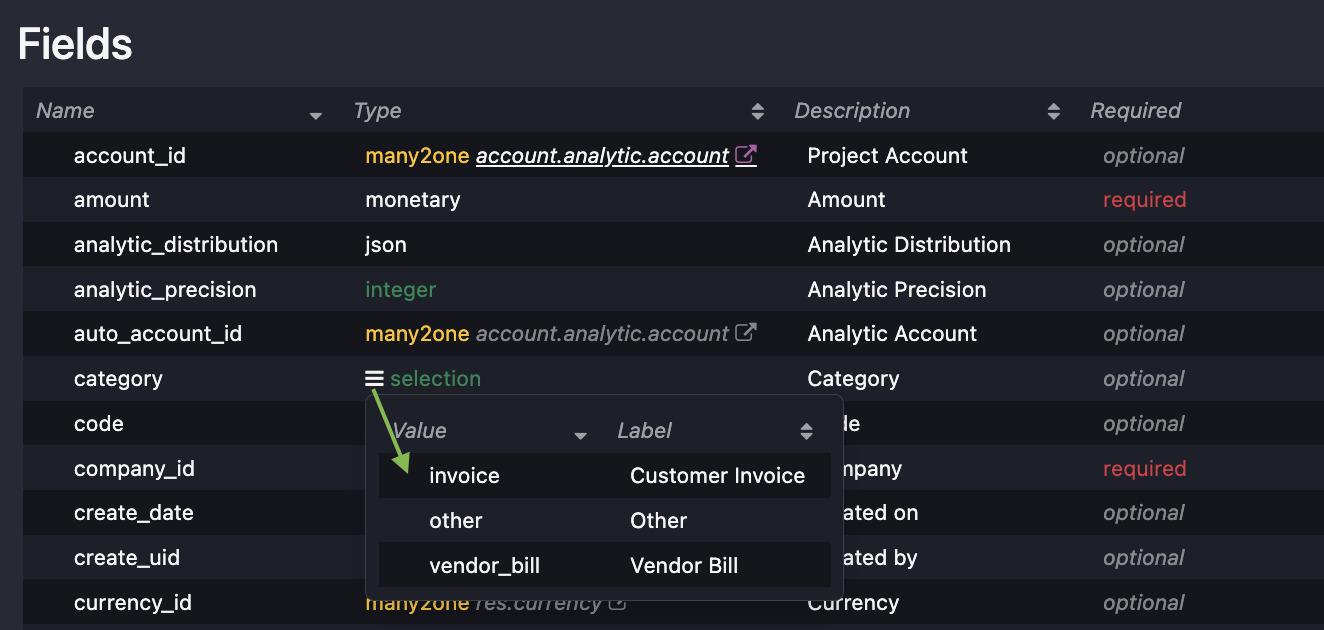A Better Way to Explore Odoo APIs
Until Odoo 19, developers and consultants had to rely on code inspection, trial and error, or third-party tools to explore Odoo’s API. Documenting custom modules was a manual, often-neglected task, making collaboration and integration more difficult. With the release of Odoo 19, that’s changing.
Meet the new API Documentation (api_doc) module—an interactive, auto-updating API browser built directly into your Odoo instance. Unlike static documentation, this tool gives you a live, searchable, and testable view of every single model in your database.

Why the Odoo 19 api_doc Module Stands Out
The api_doc module isn't just a static page listing endpoints. It's a dynamic, full-featured environment built to streamline development and integration.
1. Auto-Generated Documentation
The module automatically generates documentation for all models in your database. It intelligently inspects model fields, methods, parameters, and return types, converting even your existing reStructuredText docstrings into beautifully formatted HTML. As you develop and change your modules, the documentation updates in real-time.
2. An Interactive API Playground
Forget Postman or Insomnia for initial tests. You can test API calls directly in your browser. It features a live code editor with syntax highlighting, allowing you to build and execute requests against your live (or test) database and see the response instantly.

3. Multi-Language Code Generation
Need to provide a code snippet to a colleague or a client? The tool instantly generates ready-to-use code for your API calls in multiple languages:
- cURL: For quick command-line testing.
- Python: Complete requests examples, perfect for backend scripts.
- JavaScript: Ready for browser-based fetch calls or Node.js integrations.
- JSON: The raw payload for any other use case.
4. Intelligent Search & Navigation
With a database full of models, finding what you need is key. The api_doc module includes a global search across all models, methods, and fields, along with module-based filtering.

Who Benefits from the Odoo 19 api_doc Module?
This tool brilliantly bridges the gap between technical and functional users.
For Developers
Instant API Discovery
Instead of digging through source code, you can instantly see all available public methods on a model, their exact parameters (including types and defaults), and what they return.
Rapid Prototyping
Build a mobile app or a third-party integration by testing every API call in the browser first. Validate your logic and payloads before writing a single line of implementation code.
Better Custom Development
Use it to test complex domain filters (search_read) or validate the logic of your custom business methods. It encourages you to write better docstrings, as they are immediately visible and useful.
For Functional Consultants
Visualise Data Relationships
Finally, an easy way to see how models are connected. Understand Many2one, One2many, and Many2many relationships without needing a developer to explain them.

Master Data Imports
Planning a data migration? The API docs show you exactly which fields are required (required=True) for a create operation on any model, drastically reducing errors.
Accurate Integration Scoping
Confidently discuss integration possibilities with clients. You can browse the available APIs yourself to confirm if a requested feature is feasible, leading to more accurate project estimates.
Troubleshooting and Training
Use the tool to visually demonstrate Odoo's data structure to clients or train junior consultants. When troubleshooting, you can test specific scenarios to understand error messages or validate data formats.
Getting Started with the Odoo 19 API Documentation Module
1. Access the Documentation
Simply navigate to https://your-odoo-instance.com/doc
2. Check Permissions
Access is restricted to users in the Technical Documentation group. By default, the System user and other admin users have this access.
3. Explore
Use the search bar to find a model (e.g., sale.order or res.partner).
4. Interact
Click on a method like search_read or create. The playground will appear, allowing you to fill in parameters and execute the call.
A Key Detail: What Methods Are Public?
The api_doc module is smartly designed for security and clarity. It only shows methods intended for external use. The rules are simple and follow Python conventions:
Visible Methods
Any method that does not start with an underscore (_) and is not decorated with @api.private. Standard methods like create(), write(), search_read(), and your own custom public methods will appear.
Hidden Methods
Any method starting with an underscore (e.g., _prepare_invoice_values()) or decorated with @api.private is considered internal and will not be exposed.
This is a critical security feature, ensuring the API surface remains clean and that internal logic is not accidentally exposed.
Before and After: Odoo 19’s Leap Forward
Final Thoughts
This Odoo 19 API Documentation Module represents a massive leap forward in developer experience and functional accessibility for Odoo. It encourages better documentation practices, speeds up development, and empowers functional team members to understand the system on a deeper level.
If you’re upgrading to Odoo 19, the api_doc module should be one of the first features you explore. It will streamline your API workflows, reduce integration errors, and make your Odoo environment easier to navigate for both developers and consultants.